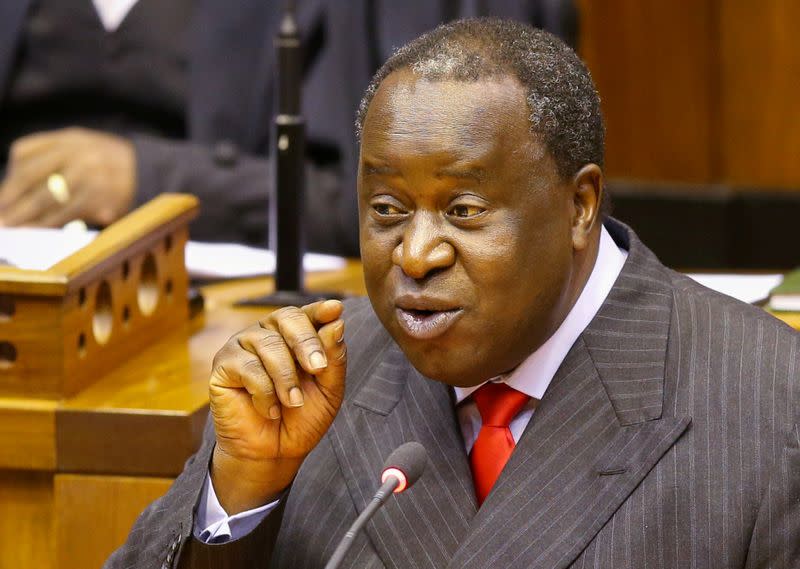Explainer - Why South Africa's public wage bill is a problem
JOHANNESBURG (Reuters) - South Africa says it will slash public sector wages by 160 billion rand ($10.5 billion) over the next three years to help contain a rising budget deficit.
Trade unions, with which the government must negotiate the spending cuts, are promising a fight.
Here is why the government wage bill is a problem.
WHAT IS THE PUBLIC WAGE BILL?
South Africa spends around a third of its budget on the salaries of 1.2 million civil servants, including national and provincial officials, doctors, teachers and police.
In the fiscal year ending next month, it will spend around 629 billion rand ($41.3 billion) on public sector wages, growing progressively to 697 billion rand by 2022/23, according to plans unveiled on Wednesday.
HOW DID IT GET SO LARGE?
After the end of apartheid in 1994, the governing African National Congress (ANC) sought to empower millions of disadvantaged black people, including by placing them in public sector jobs.
Government expenditure on public sector salaries more than tripled between 2007 and 2019.
The main reason was above-inflation wage deals with powerful unions, which are allied with the ANC and can shut down parts of the economy if they don't get their way.
Civil servants' salaries rose by about 40% in real terms over the past 12 years, while their number grew by 170,000. The fastest wage increases were in high-skilled professions, including doctors and teachers.
HOW WILL GOVERNMENT MAKE THE CUTS?
It has yet to say. Officials have said cuts could be achieved through modifications to cost-of-living adjustments and by halting automatic pay progression.
Previous efforts to cut compensation costs, including offering early retirement, have not been successful.
Some analysts think the government won't be able to deliver the promised cuts because the ANC needs its union allies to help mobilise support at local elections next year.
ARE THE PROPOSED CUTS ENOUGH?
Even if the cuts materialise, the budget deficit will remain high at 6.8% of GDP next fiscal year, and the debt-to-GDP ratio will still exceed 70% by 2023.
Many analysts expect the dismal metrics will prompt Moody's to downgrade the country's last investment-grade credit rating to "junk" status this year.
Public sector pay would still account for a greater share of government expenditure than in many advanced and emerging economies in Europe and Asia.
But it would be broadly in line with levels elsewhere in sub-Saharan Africa and South America, according to an International Monetary Fund study.
The problem for South Africa is that it has so little revenue to spare, given slow economic growth, chronically high unemployment and a small tax base.
($1 = 15.2377 rand)
(Reporting by Alexander Winning, Olivia Kumwenda-Mtambo, Wendell Roelf and Mfuneko Toyana; Editing by Alexandra Zavis and John Stonestreet)



